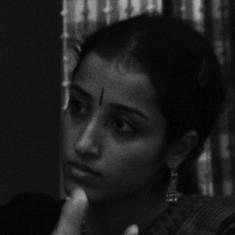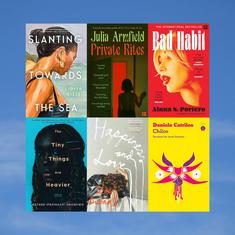In the year 1824 in the city of Patna, straddling the crossroads of rising European trade and a declining Mughal empire, an unlikely group of people met for an even more unlikely purpose. Under the stewardship of amateur English artist Charles D’Oyly, the group, made up of Europeans and Indians, decided on July 1 to form the Bihar School of Athens.
It was to be an art society for the “promotion of arts and sciences and for the circulation of fun and merriment of all descriptions”.
This Bihar School of Athens, also called the United Patna and Gaya Society, would meet at the Patna house of Raja Mitrajit Singh, the ruler of Tekari, known for his interest in poetry and history. Patna of that time was a city of mixed ethnicity with the factories of European trading companies and their bungalows alongside the lavish houses of Indian merchants and landlords interspersed with mosques and temples.
Glimpses of the bustling city with its crowded bazaar street and picturesque countryside were captured in the artwork produced by members of D’Oyly’s society. Patna of the early 19th century was also a leading centre for the collection of opium – and D’Oyly was Bihar’s opium collection agent. The lucrative crop was cultivated along the Ganga River, processed at the Gulzarbagh factory into balls of opium and shipped in crates to Calcutta.
With the expanding power of the British East India Company and Calcutta’s emergence as a distinct British India stronghold, it was Patna that retained its unique, cosmopolitan character. In a departure from solidifying racial divisions and norms, D’Oyly’s “Athenians” also included “native” Indians.
D’Oyly himself was disdainful of British high society. But it was this disdain that brought together like-minded artists rooted in the liberalism of 19th-century India, leaving behind a unique legacy of British Indian visual history.

Past and present
As much as D’Oyly may have scorned British high society, he was very much a part of it, having been born into nobility and benefitted from influential connections. He was born in 1781 in Murshidabad where his father, Sir John Hadley D’Oyly, was a resident at the court of the Nawab of Bengal. D’Oyly was the godson of the wife of Governor-General of Bengal Warren Hastings.
D’Oyly’s parents moved back to England when he was four and he completed his education there. When D’Oyly turned 17, he received a recommendation from Hastings and joined the Bengal civil services as the Collector of the Customs at Calcutta.
The time during which D’Oyly grew up as a child in Bengal was that of Hastings’s orientalism that was defined by a keen interest in Indology and the free intermingling of British and Indians. But things had changed entirely by the time D’Oyly returned to serve as a member of the Bengal Civil Services under Charles Cornwallis as governor general.
Cornwallis had a contempt for inter-racial mingling and shunted the British in Calcutta who had married to Indians to the outskirts of the colonial capital. The British-Indian society of Calcutta, characterised by its Europeanness in architectural style and segregation of natives and British, did not appeal to D’Oyly.
D’Oyly was derisive of the British imperialists and the Indian babus in their service. His European in India, published in 1813, was a satirical take on the lives of the British in India as well as a racist mockery of the Indians who served them.
In 1785, Hastings was removed from Bengal and sent to London and would soon face trial for corruption. But D’Oyly had continued his correspondence with the influential British administrator, who suggested that the young Englishman turn to the countryside rather than political Calcutta for his postings.
Artistically, too, it seemed that D’Oyly was becoming inclined towards the Indian countryside. During his tenure in Dacca from 1808 to 1812, D’Oyly had met George Chinnery and later James Atkinson, two leading artists of the time. Chinnery’s lasting influence on D’Oyly’s style of art turned his attention to the picturesque countryside of Bihar and Bengal.
After serving as the Collector of Dacca and later as the Collector at Calcutta, D’Oyly became a commercial resident of Patna in 1820. A year later, he was appointed the city’s opium agent and worked in Patna till 1831, which were his most productive years as an artist.

Patna of the old and new
Unlike Calcutta, Patna was a decadent city reminiscent of the old aristocracy. Segregated due to ethnicity from the times of Cornwallis, it was art that brought literary and visual artists and patrons together in Patna. The creation of a distinct British-India in Calcutta had sidelined Anglo-Indians, many of whom were part of D’Oyly’s circle, or were close to his father and Warren Hastings’s family.
The Bihar School of Athens, thus, was a distinct outlier, becoming an artistic haven for British, Anglo-Indian and Indian artists and migrants.
The Asiatic Society of Bengal in Calcutta, for instance, which had been pursuing oriental research since 1784, admitted only European members until 1828. Similarly, the Indian Museum, established in Calcutta in 1814, did not have any Indian artists in its collection though it held the work of leading European artists of the time.
London, by then, had a history of founding art societies, the most prominent of which was the Royal Academy of Arts. The Academy had art schools that trained students through copying old masterpieces as well as drawing directly from nature.
D’Oyly, in many ways, was perhaps trying to establish a similar art movement in Patna and hoped to train local Indians to draw directly from nature, with accuracy.

But unlike the Royal Academy, which did not admit amateurs – including D’Oyly – as its members, the Bihar School of Athens was a body of amateur artists interested in promoting art. The “Athenians” included George Chinnery as patron, D’Oyly as president and CW Smith, a bird painter and naturalist, as vice president.
Other “Athenians” were D’Oyly’s wife, Elizabeth Jane, an artist herself, and James Young, an officer of the Bengal Horse artillery and an amateur artist. John Elliot, son of Lord Minto, as well as Mary Fendall, the wife of Sir John Hadley O’Doyly II, were also members. Others such as Sarah Amherst, the wife of Lord Amherst and a botanist, and Robert Smith, an engineer were also part of the group.
Between 1828-’32, D’Oyly set up the Behar Lithographic Press. The Behar Amateur Lithographic Scrapbooks, published between 1828 and 1830, comprise the work of several artists who were “Athenians”. The work of two Indian artists, Shiv Dayal and Jai Ram Das, can also be found among the pages of the scrapbook.

Das, who was D’Oyly’s assistant in the Behar Lithographic Press, was an artist of the Bihar School of Athens and made prints in stone of some of the artworks for D’Oyly. His cousin, Hulas Lal, had moved from Benares and come to Patna where he was hired as a draughtsman by the East India Company. He worked for Indian and European patrons and several of his works have been found dated 1816.
Nisar Mehdi was another artist who migrated from Murshidabad to Patna. He, too, produced artwork as part of the Bihar School of Athens. Mehdi worked about the same time as Sewak Ram, another famous artist who had also moved from Murshidabad to Patna. Mehdi came from a family of artists who had painted for the Mughals and later for the nawabs of Murshidabad.
Fakir Chand Lal, who had his atelier in Lodi Katra where he taught art, also made drawings for Christopher Webb and D’Oyly’s Oriental Ornithology, published by the Behar Lithographic Press in 1829.
During his Patna days, D’Oyly’s Behar Lithographic Press also published the Indian Sports (1829), a visual account of the hunting expeditions of Indians and British, Costumes of India (1830), Sketches of the New Road in Journey from Calcutta to Gyah (1830) and Featherhead Game of Hindostan (1828).

Art transcends divides
Away from the racial politics and opulence of British Calcutta, the Athenians focused on scenes from everyday life, landscapes and flora and fauna – the three artistic themes in vogue in the 19th century. D’Oyly gained a reputation in England as an amateur artist who had introduced the picturesque to native artists in Patna. But at the same time, D’Oyly was also influenced by the artists of Patna.
Although it is difficult to precisely point out who influenced whom, there are two ways of seeing D’Oyly’s approach: he was either liberal for his era and believed that Indians and the British could both be part of an art society, unlike the segregation in place in Calcutta. Or he felt that Indian artists lacked skills but could be taught in European style, which is symptomatic of the British civilising mission of Indians from the late 18th century onwards.
But there is another possible interpretation, the more likely one, which is that the Patna to which D’oyly had arrived in was already a centre of artistic production blending Mughal, Murshidabad and European styles. Patna was already a centre of artistic pursuit and artists sold their work to patrons on demand. D’Oyly and other European artists, may have been just as influenced by the ancient city and also introduced the European style in art.
The commingling of art with Patna’s other nerve centres was also where the “Patna Kalam” was born, a unique art style influenced by the Mughal era, Bengal’s Murshidabad – another great centre of art – and the Europeans. The Patna Kalam was characterised by its “kajli siayhi”, which literally translates to black ink, which was used to draw the outline of illustrations.
D’Oyly’s corpus of work is replete with the picturesque of the British aesthetic theory and later romanticism and realism. But the influence of the Patna Kalam is evident in the depictions of the everyday lives of people and the streets. It was the demand for artwork from Europeans and a growing Indian middle-class bureaucracy that the culture of consumption of artworks emerged from.
D’Oyly’s influence really lay in his zeal for the promotion of art and the Bihar School of Athens and the Behar Lithographic Press were his attempts to popularise art.
In promoting the free mingling of artists, regardless of ethnicity, and the opening up his residence and studio to anybody keen on art, at a time when racial segregation and pomp of the British headquarters in Calcutta were a norm, D’Oyly also made a political statement intertwined with his rich artistic legacy.
Sonal is an Assistant Professor at the Department of History, Shivaji College, University of Delhi.










